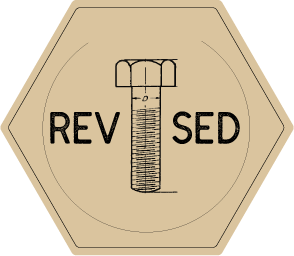Pierre Levie’s first stop takes them to Bursa, where they visit the Green and Blue Mosque, both completely covered in ceramic tiles. They need to cover another 450km to Izmir and since it’s already getting dark, no more filming is possible. The next day the group splits up: Pierre Levie leaves for the thermal hillside springs in Denizli in the 80” Land Rover, Suzette Levie and cinematographer Gerard Perrin are accompanied by the conservator of the Ephesus museum and a Turkish guide and set off to film the ruins of the temple of Darius in the 107”.
After extensively documenting the ruins, Perrin wants to finish the shoot by filming the sunset on the ruins from a nearby mountain. They hurry and continue for another 2km on the curving road to find the perfect spot for the sunset, but all of a sudden a very sharp curve in the road appears. Since the Land Rover was driving at high speed, no braking or turning helps, the vehicle slides off the embankment and overturns into a field below the road.
Silence.
Suzette opens her eyes in the overturned vehicle, and crawls out on hands and feet. All the luggage and equipment has been strewn around, Gerard Perrin is still inside the cab, bleeding heavily from his face, he seems unconscious. The Turkish guide accompanying them, seated in the back, is in a more precarious condition. Covered between all the heavy film equipment and luggage in the hardtop, he screams with pain, it seems his leg is broken.
Suzette frees him and gets him out of the vehicle into safety. Perrin is still unconscious, but after 10mins he finally opens his eyes and although bleeding heavily from his face, he seems to be fine. Despite being shaken by the events, Suzette starts to do the practical stuff, unloading the luggage from the overturned vehicle and arranging all their belongings. Help has arrived in the meanwhile from passers-by and the local police. The Turkish guide is driven to the hospital in Izmir for treatment, Suzette and Perrin get the Land Rover back on it’s wheels with the help of a local Turk and his truck, who tows the Land Rover back to Ephesus. It seems still drivable, but has a broken windscreen, a dented roof and wings and all other damage needs to be assessed.
At the hotel that night Suzette tries to get in touch with her husband Pierre and the rest of the crew, but is unable to reach anyone to tell them about their ordeal. After a long sleepless night, with nightmares of more accidents, she’s finally able to get through to Pierre in the morning. He joins them in Izmir and together they drive to damaged Land Rover, without windscreen or doors to a local garage for much needed repairs.
That night the other part of the crew, visiting the Turkish capital Ankara, is greeted by a rather short telegram from Suzette when returning to their hotel: “Land Rover overturned, no serious injuries. Short delay expected”. Not overly worried they assume the delay will be short and make plans for the next days. Their itinerary will lead them via ancient villages in Anatolia to the famous Cappadocian landscapes.






















